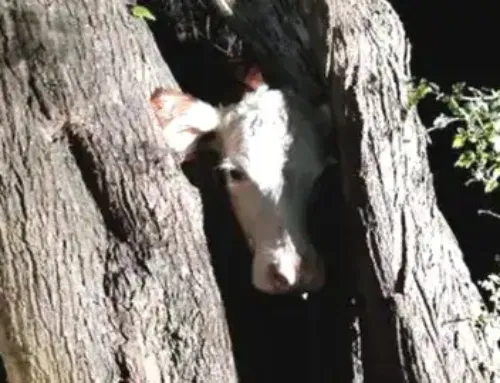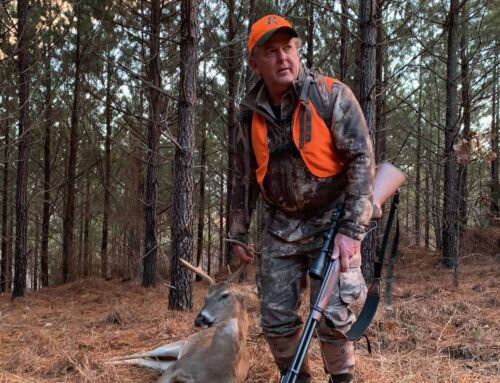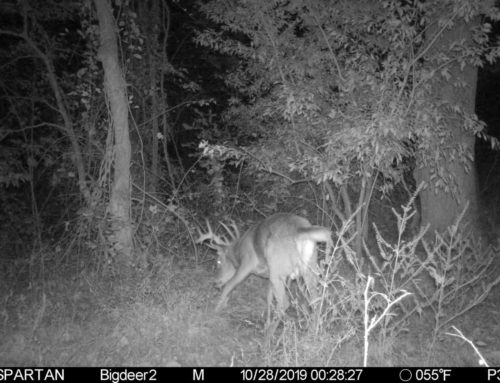Skip to content
3 Stands for Hunting Thick Cover in the Deer Rut
 Three days or so before the peak of the rut, many does pile into stands of thick cedars or pines. They’re tired of being chased over hill and dale by horny bucks, so they try to hide out in the thickets. Of course, the boys pitch in there and keep harassing them. Check an aerial photograph for a small clearing in the greens, like a third-row thinning in planted pines. Sneak in there (great quiet walking) and set up in a ground blind on the downwind side of the opening. A doe might pop out to browse with a buck on her heels, or more likely she’ll flash across, still trying to dump a rowdy 8-pointer. An old buck is apt to amble by any time, trolling for a doe, because he feels comfortable moving in the thick stuff. Since the cover is tight, this is an especially good archery, muzzleloader or shotgun spot.
Three days or so before the peak of the rut, many does pile into stands of thick cedars or pines. They’re tired of being chased over hill and dale by horny bucks, so they try to hide out in the thickets. Of course, the boys pitch in there and keep harassing them. Check an aerial photograph for a small clearing in the greens, like a third-row thinning in planted pines. Sneak in there (great quiet walking) and set up in a ground blind on the downwind side of the opening. A doe might pop out to browse with a buck on her heels, or more likely she’ll flash across, still trying to dump a rowdy 8-pointer. An old buck is apt to amble by any time, trolling for a doe, because he feels comfortable moving in the thick stuff. Since the cover is tight, this is an especially good archery, muzzleloader or shotgun spot.- Set up to cover an “inside corner” where a strip of pines or cedars corner into a block of hardwood timber. The more fresh rubs and scrapes along the edges the better. The edge and corner create a pinch point between the 2 blocks of trees to funnel a lot of rutting deer.
- A regenerating clear-cut or burn grown thick with brush, briars and brambles that are head high to a buck is a great spot for a dawn-till-noon gun post. Hang a tree stand on the edge, or climb high and sit in a pile of logs pushed together by a bulldozer (the latter is cool because you have a built-in rifle rest with the logs). A buck is liable to push or chase a doe across the cut anytime of morning because he feels safe and hidden in the cover. My favorite time to watch and rattle from the setup is 7:00 to 9:00 a.m. on a cool, still day. This is a also great place to hunt during peak rut, or a week later in “lockdown.” If you spot a doe bedded or walking in the cut, glass closely around her for a drooling buck waiting not so patiently to breed her for the first time or again.
Page load link
 Three days or so before the peak of the rut, many does pile into stands of thick cedars or pines. They’re tired of being chased over hill and dale by horny bucks, so they try to hide out in the thickets. Of course, the boys pitch in there and keep harassing them. Check an aerial photograph for a small clearing in the greens, like a third-row thinning in planted pines. Sneak in there (great quiet walking) and set up in a ground blind on the downwind side of the opening. A doe might pop out to browse with a buck on her heels, or more likely she’ll flash across, still trying to dump a rowdy 8-pointer. An old buck is apt to amble by any time, trolling for a doe, because he feels comfortable moving in the thick stuff. Since the cover is tight, this is an especially good archery, muzzleloader or shotgun spot.
Three days or so before the peak of the rut, many does pile into stands of thick cedars or pines. They’re tired of being chased over hill and dale by horny bucks, so they try to hide out in the thickets. Of course, the boys pitch in there and keep harassing them. Check an aerial photograph for a small clearing in the greens, like a third-row thinning in planted pines. Sneak in there (great quiet walking) and set up in a ground blind on the downwind side of the opening. A doe might pop out to browse with a buck on her heels, or more likely she’ll flash across, still trying to dump a rowdy 8-pointer. An old buck is apt to amble by any time, trolling for a doe, because he feels comfortable moving in the thick stuff. Since the cover is tight, this is an especially good archery, muzzleloader or shotgun spot.





Leave A Comment